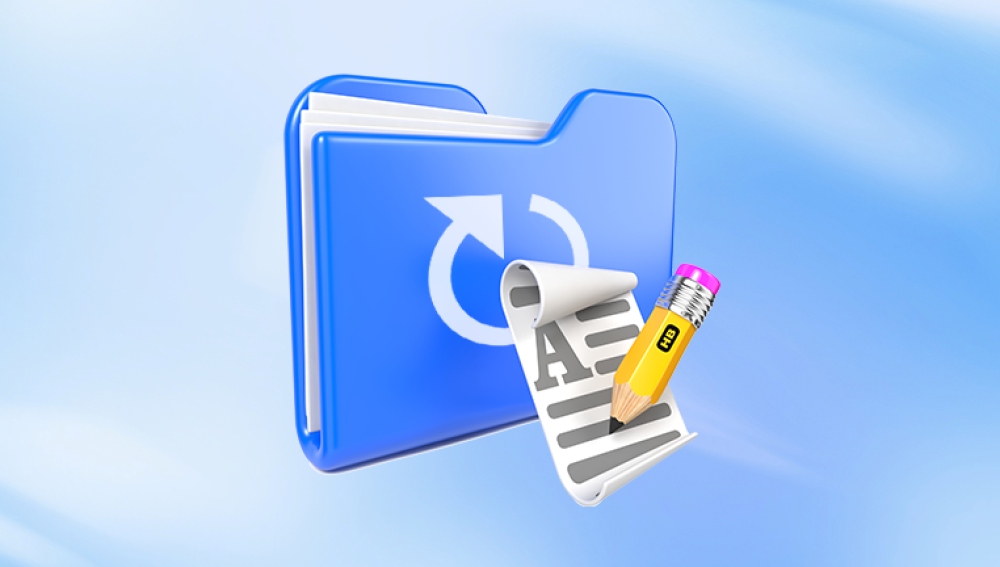Losing an unsaved PDF can be a frustrating experience, especially if it contains important information or represents a significant amount of work. However, there are several methods and tools available that can help you recover such files.
Recovering Unsaved PDFs in Adobe Acrobat
Adobe Acrobat is a widely used PDF editing and viewing software, and it offers some options for recovering unsaved files.
Auto - save feature: Adobe Acrobat may have an auto - save feature enabled, which periodically saves a copy of the file you are working on. To check if there is a recovered version available, go to the "File" menu and look for options like "Open Recent" or "Recovered Files". Sometimes, Acrobat will display a list of recently recovered files after a crash or unexpected shutdown. If your unsaved PDF is listed there, you can simply open it and save it to a new location.

Using temporary files: If the auto - save feature doesn't work or wasn't enabled, you can try to find the temporary files that Adobe Acrobat creates while you are working on a PDF. The location of these temporary files varies depending on your operating system. On Windows, they are usually located in the "%AppData%\Adobe\Acrobat\VersionNumber\Temp" folder. On Mac, they can be found in the "Library/Containers/com.adobe.Acrobat.ProDC/Data/Library/Application Support/Adobe/Acrobat/VersionNumber/Temp" folder. You can search for files with a ".tmp" extension and look for ones that match the approximate time and size of the unsaved PDF. Rename the temporary file to have a ".pdf" extension and open it in Adobe Acrobat to see if it contains your unsaved work.
Recovering Unsaved PDFs in Other PDF Editors
Many other PDF editors also have features to assist in recovering unsaved files.
Foxit PhantomPDF: Similar to Adobe Acrobat, Foxit PhantomPDF may have an auto - recovery feature. Check the "File" menu for options like "Recover File" or look for a recovery folder in the application's settings. If the software detects a crashed or unsaved file, it will offer to recover it when you reopen the application.
Nitro Pro: Nitro Pro also has a mechanism for recovering unsaved documents. It automatically saves backup copies of files at regular intervals. To access these backups, go to the "File" menu and select "Open Backup". You can then choose the version of the PDF you want to recover based on the timestamp.
Recovering Unsaved PDFs from Browser Downloads
If you were downloading a PDF in a web browser and the download was interrupted or the file was not saved properly, you can try the following methods.
Chrome: In Google Chrome, click on the three - dot menu in the upper - right corner and select "Downloads". You will see a list of all the files you have downloaded. If the PDF is listed there, you can click on the "Resume" button if the download was interrupted, or click on the three - dot menu next to the file and select "Show in folder" to locate the partially downloaded file. If the file is incomplete, you can try to rename it to have a ".pdf" extension and see if it can be opened. Some PDF readers can handle partially downloaded PDFs and display at least some of the content.
Firefox: In Mozilla Firefox, click on the library icon (three horizontal lines) and select "Downloads". Similar to Chrome, you can find the PDF in the download list and try to resume the download if possible. If the download is complete but the file was not saved correctly, you can right - click on the file in the download list and select "Open containing folder" to locate the file and attempt to open it or rename it.
Recovering Unsaved PDFs from Temporary Internet Files
Web browsers store temporary copies of files they download in a specific folder. You can try to find the unsaved PDF in these temporary internet files.
Windows: In Internet Explorer and some other browsers on Windows, the temporary internet files are usually located in the "C:\Users\UserName\AppData\Local\Microsoft\Windows\Temporary Internet Files" folder. On Windows 10 and later, you can also access this folder by typing "%temp%" in the File Explorer address bar. Look for files with a ".pdf" extension and check their timestamps to find the one that corresponds to the unsaved PDF. You can copy the file to a new location and try to open it.
Mac: On a Mac, the temporary internet files for Safari are located in the "~/Library/Caches/com.apple.Safari/TemporaryItems" folder. For other browsers, the location may vary, but you can usually find it by searching for "temporary internet files" in the Finder or checking the browser's settings for the cache location. Similar to the Windows method, look for PDF files and copy them to a new location to test if they can be opened.
Using System - Level Recovery Tools
Operating systems often have built - in tools that can help recover lost or unsaved files.
Windows File History: If you are using Windows and have File History enabled, it can be used to recover previous versions of files. To access File History, go to the Control Panel and search for "File History". Click on "Restore personal files" and then browse through the available backups to find the version of the PDF you want to recover. Select the file and click on the "Restore" button to get a copy of the file back.
System Restore: Windows System Restore can also be used in some cases. It creates restore points that contain a snapshot of the system's files and settings at a particular time. To use System Restore, type "System Restore" in the Windows search bar and select the appropriate option. Follow the wizard to choose a restore point that was created before the PDF was lost or unsaved. This method may not specifically target the PDF file, but it can restore the entire system to a previous state where the file may have been saved.
Time Machine (Mac): For Mac users, Time Machine is a built - in backup and recovery tool. If you have been using Time Machine to back up your Mac, you can use it to recover the unsaved PDF. Open the Time Machine application and browse through the backups until you find the version of the file you want. Select the file and click on the "Restore" button to copy it back to its original location or a new location of your choice.
Using Third Party File Recovery Software
Losing an unsaved PDF document can be frustrating, especially when dealing with important work or personal files. Fortunately, Drecov Data Recovery provides an effective solution to retrieve unsaved PDFs caused by accidental closures, system crashes, or power failures.
Scanning Temporary & Auto-Save Locations Many applications, such as Adobe Acrobat, store temporary copies of PDFs. Drecov Data Recovery scans these locations to retrieve unsaved files.
Recovering from System Cache If the PDF was viewed but not saved, traces may exist in the system cache, which the software can detect and restore.
Deep Scanning for Lost Files If the PDF was accidentally deleted or lost after a crash, Drecov Data Recovery performs a deep scan on your drive to recover missing documents.
Support for External & Cloud Storage If the PDF was stored on a USB drive or cloud storage, Drecov Data Recovery helps retrieve lost versions from connected devices.
Preventing Future Loss of Unsaved PDFs
To avoid the hassle of having to recover unsaved PDFs in the future, it is important to take some preventive measures.
Enable auto - save and backup features: In all the PDF editors you use, make sure to enable the auto - save feature and set an appropriate interval for saving. Additionally, check if the software offers any backup options and configure them to create regular backups of your files. This way, if something goes wrong, you will have a recent copy of the PDF available for recovery.
Save frequently: Develop the habit of saving your PDF files regularly while you are working on them. Use the "Save" or "Save As" option in the file menu to save the file to a secure location. You can also use keyboard shortcuts like "Ctrl + S" (Windows) or "Command + S" (Mac) to save quickly.
Use cloud storage and syncing: Consider using cloud storage services like Google Drive, Dropbox, or OneDrive. You can save your PDF files directly to the cloud, and they will be automatically synced across all your devices. This provides an additional layer of protection in case of a local file loss. Some PDF editors also offer integration with cloud storage, allowing you to save and open files directly from the cloud.
Backup your system regularly: Use the built - in backup tools of your operating system, such as Windows File History or Mac Time Machine, or a third - party backup software, to regularly back up your entire system. This includes all your files, including PDFs. In the event of a hard drive failure or other disaster, you will be able to restore your system and all your files from the backup.




